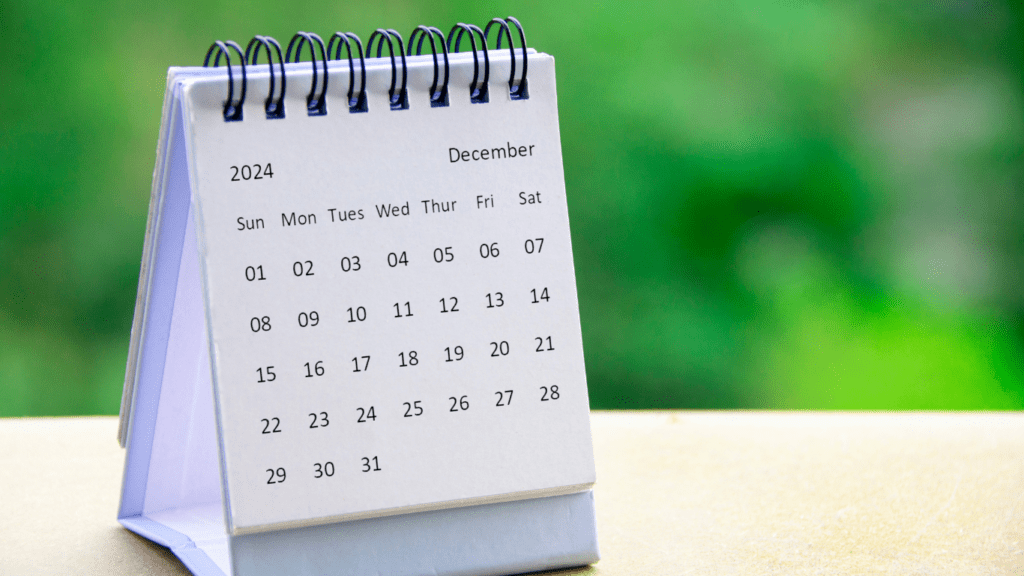Planning your content strategy is crucial for successful marketing campaigns. In this article, I’ll guide you through the process of creating a winning content calendar tailored to your marketing needs.
A well-organized content calendar not only helps in staying consistent but also ensures that your message reaches the right audience at the right time. I’ll share practical tips and strategies to streamline your content creation process and maximize the impact of your marketing efforts.
From setting clear goals to identifying key themes and scheduling posts effectively, I’ll cover all the essential steps to help you build a content calendar that drives results. Stay tuned to learn how you can elevate your marketing game with a strategic and efficient content calendar.
Understanding the Importance of a Content Calendar
Crafting a successful marketing strategy hinges on the meticulous planning of content creation and distribution. As a seasoned marketer, I know firsthand the pivotal role a well-structured content calendar plays in achieving marketing goals effectively.
A content calendar serves as the compass guiding your marketing efforts, ensuring alignment with your overarching objectives. By meticulously organizing and scheduling your content in advance, you can maintain consistency across all your marketing channels.
Moreover, a content calendar enables you to stay agile in responding to current trends and changes in your industry landscape. It empowers you to adapt your content strategy swiftly, maximizing engagement and relevance with your target audience.
In essence, a well-thought-out content calendar is the cornerstone of a successful marketing campaign, driving engagement, brand visibility, and ultimately, conversions.
Steps to Creating a Winning Content Calendar
When it comes to creating a winning content calendar, there are key steps to follow that can elevate your marketing strategy. Let’s delve into the essential components of crafting a successful content calendar tailored to your marketing needs.
Setting Clear Goals for Your Marketing Needs
To kickstart the process of developing a content calendar, it’s crucial to first establish clear and measurable goals that align with your overall marketing objectives. Define what you aim to achieve through your content, whether it’s increasing brand awareness, driving website traffic, boosting lead generation, or fostering customer engagement.
By setting specific goals, you provide a roadmap for your content creation efforts and ensure that every piece of content serves a purpose in fulfilling those objectives.
Identifying Your Target Audience
Understanding your target audience is fundamental to creating content that resonates with them and drives meaningful interactions. Conduct thorough research to identify the demographics, preferences, behaviors, and pain points of your audience.
By gaining insights into who your audience is and what they seek, you can tailor your content calendar to deliver relevant and valuable information that addresses their needs. This targeted approach enhances engagement, nurtures customer relationships, and ultimately contributes to the success of your marketing campaigns.
Tools and Resources for Building Your Content Calendar
In choosing the right tools and resources for building a robust content calendar, I’d recommend leveraging a mix of digital platforms and applications that streamline the content creation and scheduling process. These tools are designed to help marketers stay organized, collaborate efficiently, and optimize their content strategy. Here are some essential tools and resources to consider:
1. Content Management Systems (CMS):
- Utilizing a reliable CMS, like WordPress or HubSpot, can simplify the content creation and publishing workflow. These platforms offer content scheduling features, content categorization, and easy editing capabilities, making it easier to manage your content calendar effectively.
2. Social Media Management Tools:
- Tools such as Hootsuite, Buffer, or Sprout Social are indispensable for planning and scheduling social media posts across multiple platforms. They offer analytics insights, content curation functionalities, and team collaboration features to enhance your social media content strategy.
3. Editorial Calendar Plugins:
- Installing editorial calendar plugins for your CMS can provide a visual overview of your content schedule. Plugins like Editorial Calendar for WordPress allow you to drag and drop posts, set publication dates, and ensure a cohesive content plan.
4. Project Management Platforms
- Platforms like Asana, Trello, or Monday.com can help teams coordinate content creation, assign tasks, and track project progress. These tools facilitate seamless communication, task management, and deadline tracking for a more efficient content calendar.
- Incorporating keyword research tools such as SEMrush, Ahrefs, or Google Keyword Planner is crucial for optimizing your content calendar for search engines. These tools help in identifying relevant keywords, analyzing search trends, and crafting SEO-friendly content to improve visibility and drive organic traffic.
By integrating these tools and resources into your content planning process, you can streamline your workflow, enhance collaboration among team members, and optimize your content strategy for better results. Remember, choosing the right tools that align with your marketing needs and objectives is key to creating a winning content calendar that drives engagement and achieves your business goals.
Implementing and Managing Your Content Calendar Effectively
As I discuss implementing and managing your content calendar effectively, it’s vital to remember that consistency is key to success in any marketing strategy. Sticking to a well-structured content calendar ensures that all your efforts align with your overarching objectives and remain relevant to your audience.
Here are some practical tips to help you manage your content calendar efficiently:
- Prioritize Regular Updates: Consistent updates keep your audience engaged and maintain a steady flow of content. Set specific dates for content publication and stick to them to build anticipation among your audience.
- Leverage Scheduling Tools: Use scheduling tools like Buffer or Hootsuite to plan and automate your social media posts. This approach saves time and ensures that your content reaches your audience at optimal times for engagement.
- Maintain Flexibility: While consistency is crucial, it’s also essential to remain flexible. Be ready to adapt your content calendar based on real-time events, trends, or audience feedback to ensure relevance and resonance.
- Monitor and Analyze Performance: Regularly track the performance of your content across various channels. Analyze metrics such as engagement rates, click-through rates, and conversions to refine your content strategy and optimize future content creation.
- Foster Collaboration: Encourage collaboration within your team by using project management tools like Asana or Trello. By sharing ideas, feedback, and responsibilities, you can streamline the content creation process and ensure a cohesive content calendar.
Implementing these strategies will help you effectively manage your content calendar, stay ahead of industry trends, and drive meaningful engagement with your target audience. By fostering a consistent and adaptable approach, you can maximize the impact of your content marketing efforts and achieve your business goals seamlessly.

 Lloyd Stafford has been instrumental in the development of Squad Digital Hack, leveraging his extensive knowledge of digital marketing to enhance the platform's offerings. His commitment to delivering practical insights and innovative strategies has helped users navigate the complexities of online marketing. Lloyd’s expertise in social media tactics and email marketing solutions empowers marketers and entrepreneurs to build strong brand visibility and drive meaningful engagement with their audiences.
Lloyd Stafford has been instrumental in the development of Squad Digital Hack, leveraging his extensive knowledge of digital marketing to enhance the platform's offerings. His commitment to delivering practical insights and innovative strategies has helped users navigate the complexities of online marketing. Lloyd’s expertise in social media tactics and email marketing solutions empowers marketers and entrepreneurs to build strong brand visibility and drive meaningful engagement with their audiences.